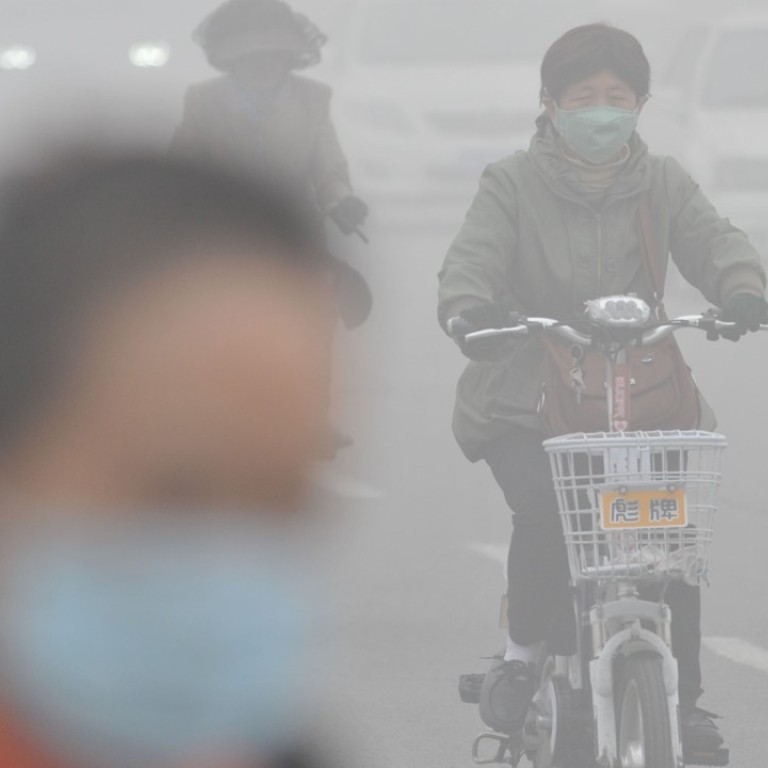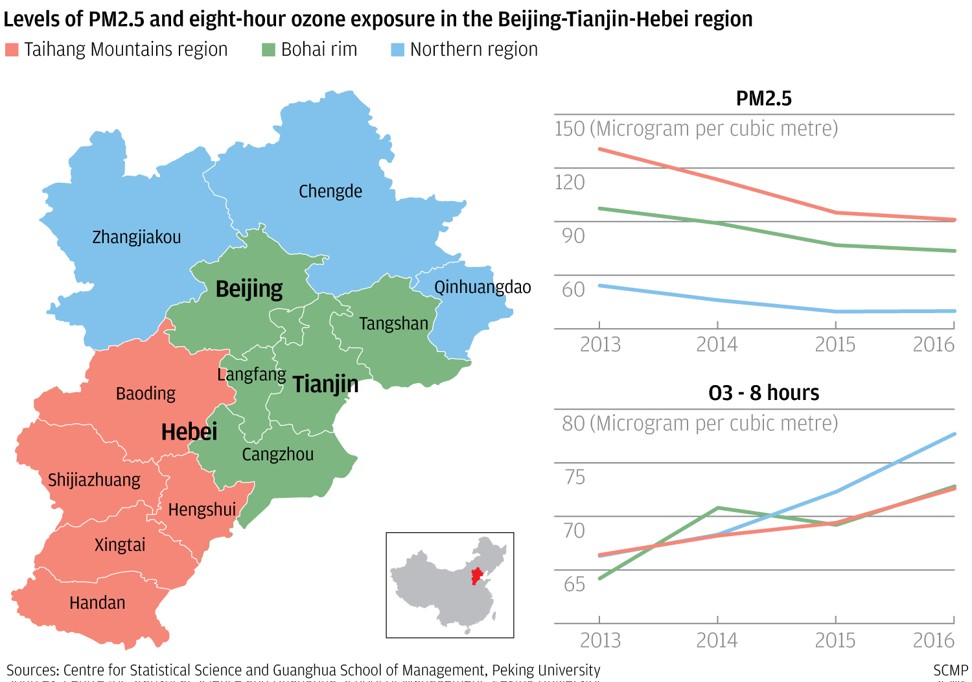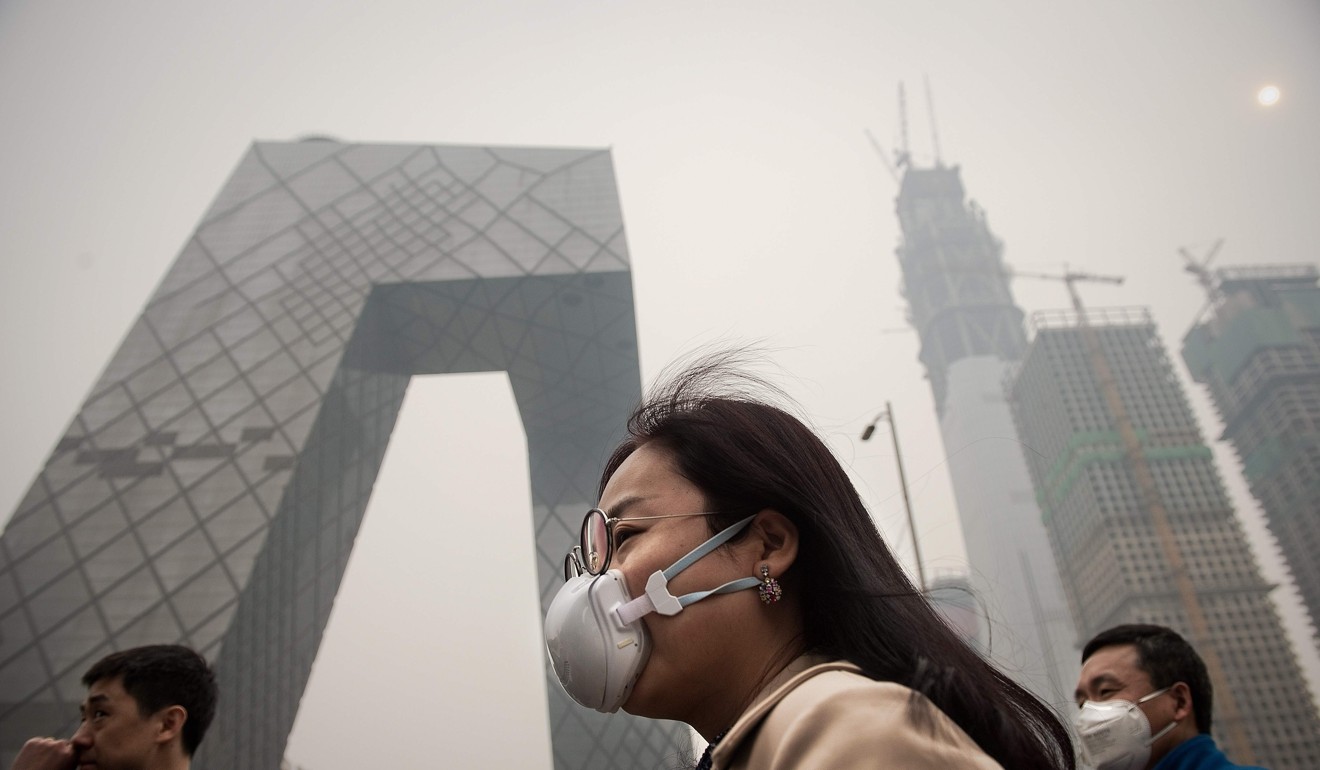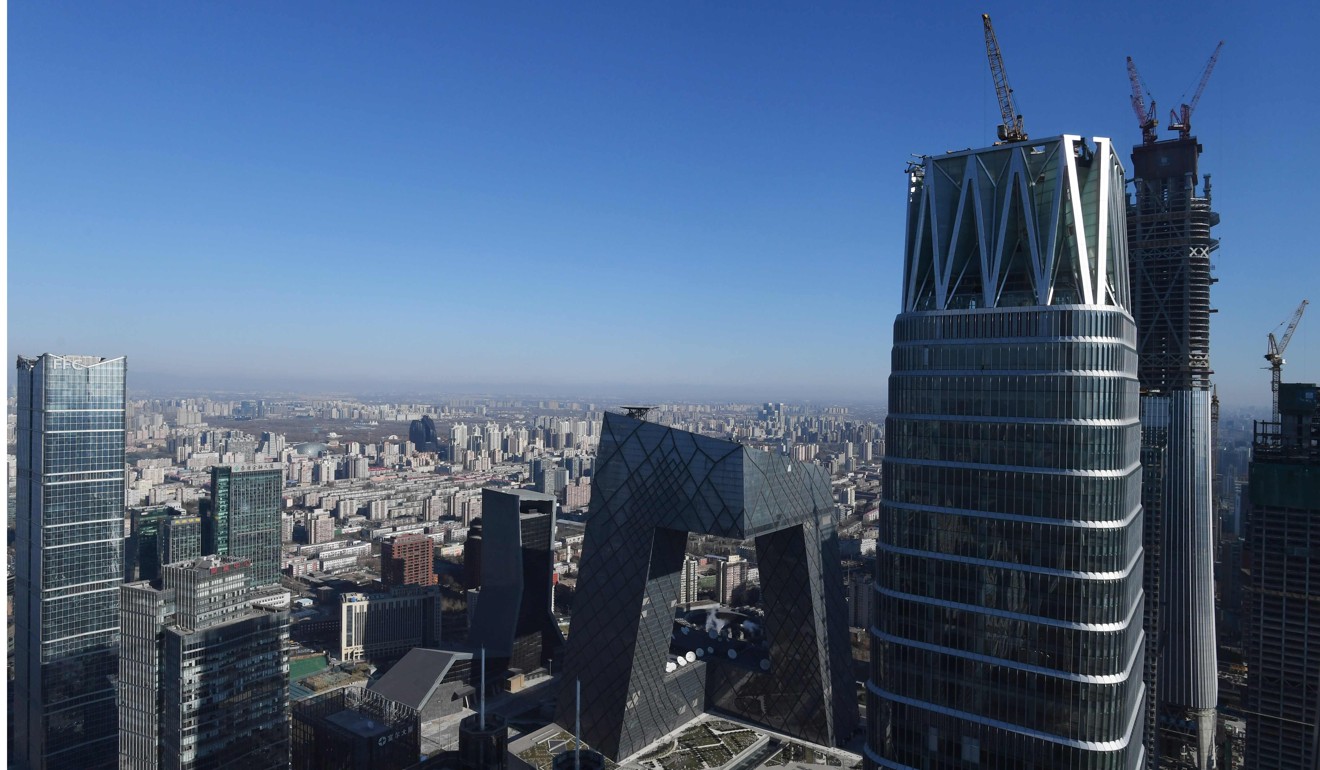
Are falling levels of PM2.5 creating new ozone air pollution woes in Beijing area?
Ozone pollution is getting worse in the capital and its neighbouring cities
In northern China, levels of the notorious PM2.5 particulate have gone down in tandem with reduced coal use in recent years, but now another hazardous air pollutant is on the rise.
Ozone pollution has been worsening in Beijing and its neighbouring cities, a problem that can lead to serious health problems, a new study has found.
Levels of the pollutant went up by 13.3 per cent from 2013 to 2016 in the 13 cities of the Beijing-Tianjin-Hebei area – an industrialised region with 130 million residents – according to the Peking University study.
Ozone is a major component in photochemical smog, one of the most harmful types of air pollution for people living in metropolitan regions.

Along with PM2.5, it is one of the major culprits contributing to air pollution – others include the larger PM10 particulates, sulphur dioxide and nitrogen dioxide.
Ground-level ozone – in contrast to the good ozone in the upper atmosphere that shields humans from the sun’s harmful ultraviolet rays – is formed through chemical reactions involving sunlight, nitrogen oxides and volatile organic compounds that originate from traffic and industrial pollution.
Inhaling low amounts of ozone can cause headaches, dry mouth and coughing. When the air’s ozone concentration rises above 240 micrograms per cubic metre, it can exacerbate health issues such as asthma and heart disease.

The study was conducted by researchers at the university’s Centre for Statistical Science and its Guanghua School of Management.
Chen Songxi, one of the lead researchers on the study, said a recent drop in the level of breathable particles such as PM2.5 could have contributed to the increase in ozone.
PM2.5 refers to tiny airborne particles less than 2.5 microns in diameter, about 3 per cent the diameter of a human hair.
“The sunlight is stronger when there is less PM2.5, and it speeds up ozone formation,” Chen said.
“But in the long term, the two problems can be tackled at the same time by reducing emissions.”
The Beijing-Tianjin-Hebei region’s average level of PM2.5 went down by 27 per cent from 2013 to 2016, thanks to cuts in coal consumption, the study showed.
Most of the improvements were recorded in 2014 and 2015. PM2.5 concentrations went up again in autumn and winter last year as more coal was used in Hebei province.
The study was based on data collected from 73 air quality monitoring centres run by the Ministry of Environmental Protection.
The Chinese government and the World Health Organisation both put the limit of eight-hour average exposure to ozone at 100 micrograms per cubic metre.
Most of the cities in the region, including Beijing, saw their exposure number rise above that limit last summer, according to the study.
In Shanghai, the number also surpassed the threshold over seven days in May and six days in June, official data showed.

The Peking University team called on the government to set targets for reducing ozone levels.
Air pollution has become a major cause of social discontent in China after three decades of unbridled growth that relied heavily on manufacturing.
As well as the health risks, rising ozone levels in China are also damaging its rice yields – a problem that could compromise global food security, according to a recent study led by researchers at the University of California, Davis.
But compared with PM2.5, a widely discussed pollutant in recent years, ozone pollution is a relatively new topic in China.
“Ozone is an invisible pollutant,” said Ma Jun, director of the Institute for Public and Environmental Affairs. “The problem tends to be more severe when there is a beautiful blue sky.”
In 2016, the chemical was the top air pollutant in the Pearl River Delta region, and the second major pollutant after PM2.5 in the Beijing-Tianjin-Hebei area and the Yangtze River Delta region, according to the state-run Xinhua news agency.


